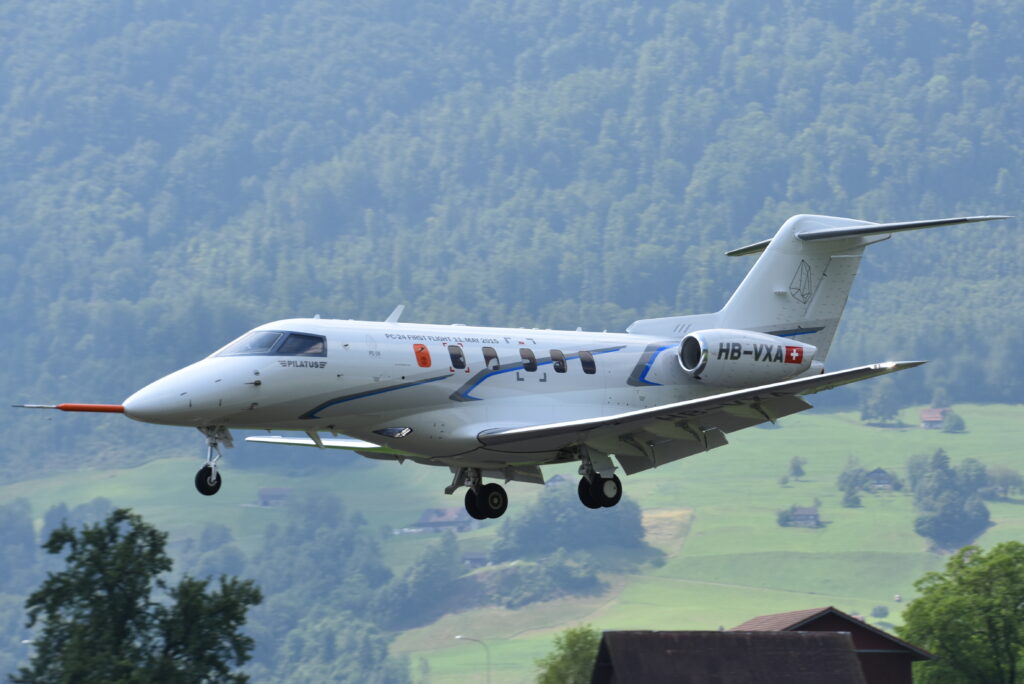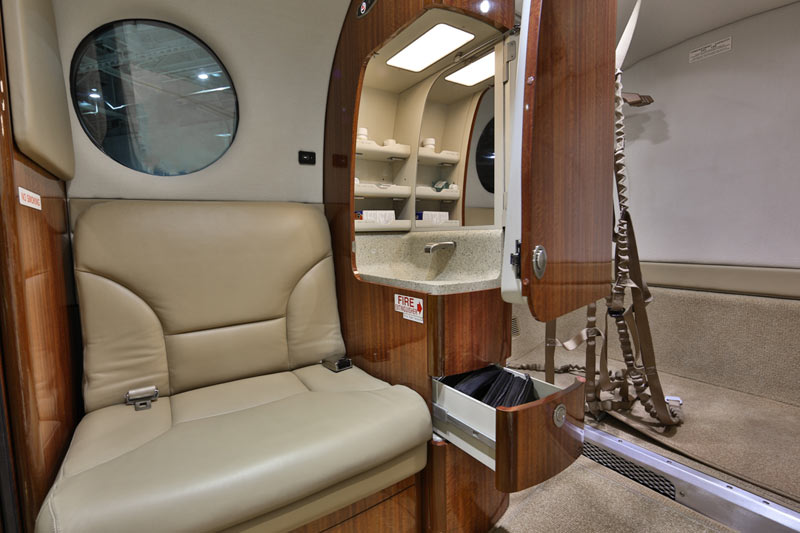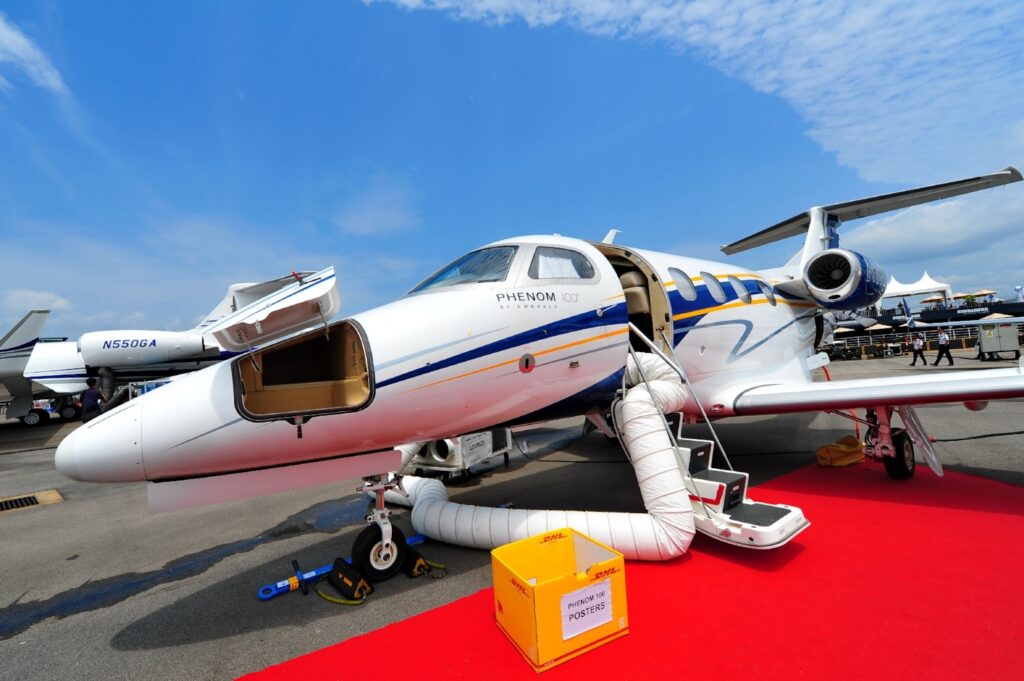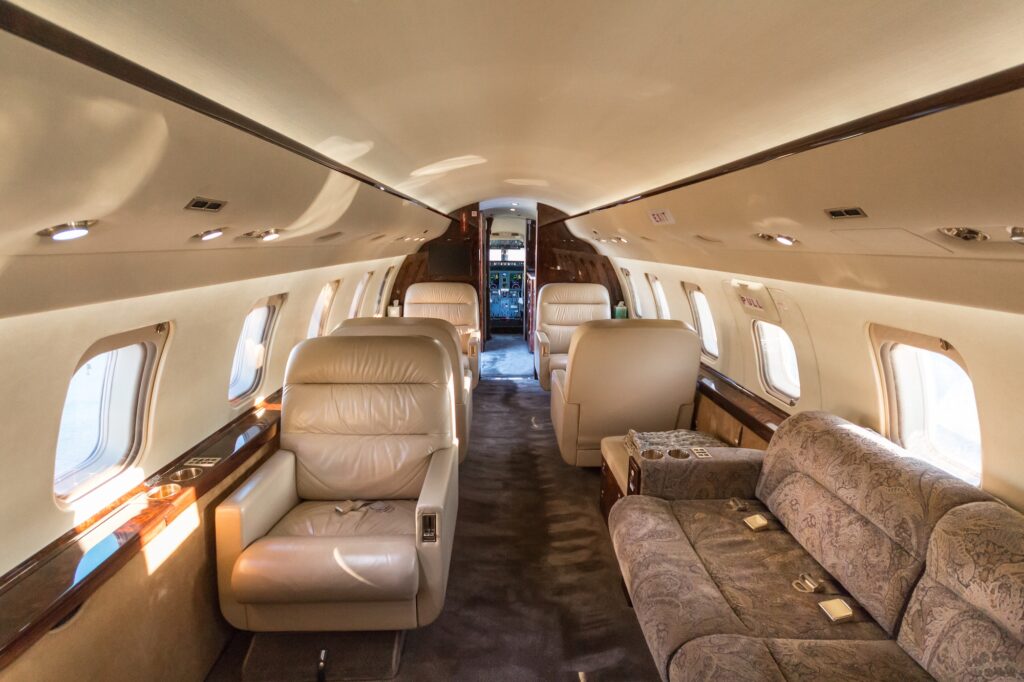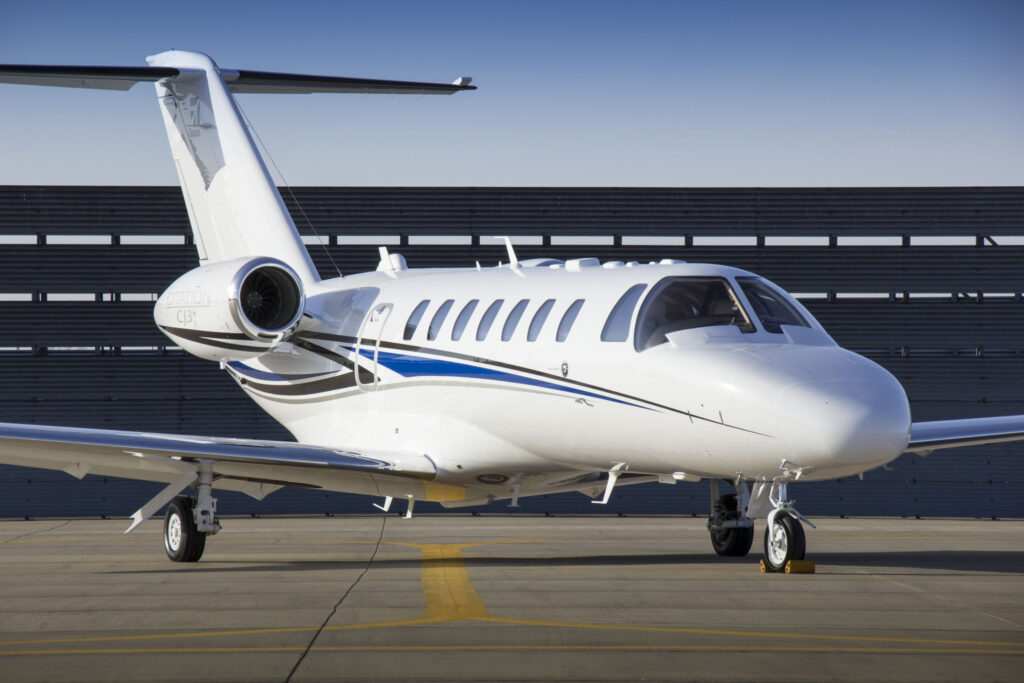Falcon 6X
Following Dassault’s abandonment of the Falcon 5X in late 2017 due to development issues of the new Snecma Silvercrest engines, they’ve moved on to a successor in the Falcon 6X, which they announced in February of 2018. The aircraft is set to make its first flight in 2021 with deliveries slated to begin in 2022, according to Dassault.
Dassault claims that the large-cabin 6X “has a created a new category: the ultra widebody business jet.” The aircraft’s cabin has a height of 6’6” and a width of 8’6”, comparable to the Gulfstream G650 which has the same cabin width and is one inch shorter in height.
The Falcon 6X will come equipped with two Pratt & Whitney Canada PW812D PurePower engines, and will reportedly have a range of up to 5,500 nautical miles, a maximum operating speed of 370 knots, and will have a cabin configuration fit for eight passengers.
The 6X’s cockpit will be equipped with Dassault’s EASy III avionics system, featuring the FalconEye Combined Vision System and the FalconSphere II integrated Electronic Bag System.
Pilatus PC-24
Perhaps the most anticipated newcomer to the list is the PC-24, making Pilatus Aircraft the first company since HondaJet to enter the light-jet market. Pilatus boasts the most loyal user base of any aircraft manufacturer, and the PC-24 is basking in its little brother’s success, with orders lined up through mid-2020.
Pilatus delivered its first PC-24 to PlaneSense in February 2018. The PC-24’s biggest selling point is its ability to take off and land on shorter runways than most jets with similar flight capabilities. The aircraft is single-pilot certified, allowing it to seat up to 11 passengers, including one in the cockpit.
According to Pilatus Aircraft, the PC-24 is capable of a 2,810-foot takeoff distance and has a landing distance of 2,355 feet. The aircraft comes equipped with two Williams FJ44-4A engines and has a maximum cruise speed of 440 knots and a four-passenger range of 2,035 nautical miles.
PC-24 pilots will have Pilatus’ ACE avionics system at their fingertips, which features four 12-inch screens, and according to Pilatus, “The Inertial Reference System (IRS) guarantees excellent reliability and accuracy of altitude and navigation data. As standard equipment, the Pilatus ACE™ also includes a Synthetic Vision System, Autothrottle, Graphical Flight Planning, Traffic Collision Avoidance System (TCAS II), and Localizer Performance with Vertical Guidance (LPV) capability.
Have you flown in a PC-24, yet? If so, let us know what you think! If its anything like the PC-12, we’re already fans.
G500/G600
Gulfstream’s newest addition to the family, the G500, is set to reach FAA certification later this summer, but the aircraft is making the rounds regardless. According to FlightGlobal, Qatar Executive (the private aircraft charter division of Qatar Airways) will soon debut their first G500, which will be flown by Gulfstream from their headquarters to a Qatar event before returning to Gulfstream HQ in Savannah, Georgia.
Qatar placed an order for 30 Gulfstream business jets in 2014, which included a number of G500s and its longer-range sibling, the G600. The G500 flight-test fleet has eclipsed 5,000 hours, according to Gulfstream, and hopes to reach FAA certification in the third quarter of 2018, followed by certification of the G600 before the end of 2018.
The Gulfstream G500 is powered by two Pratt & Whitney Canada PW814GA engines, giving it an eight-passenger range of 5,200 nautical miles and a cruise speed of just over 500 knots. The G500 can seat as many as 19 passengers in its typical configuration, as well.
The G600 has the upgraded PW815GA engines, giving it an increased range of 6,500 nautical miles with eight passengers. The G600’s cruise speed hovers around 500 knots, as well, and seats the same number of passengers as the G500, although the cabin is nearly four feet longer. The thrust on the upgrades engines is 15,680 lbs each, compared to 15,144 for the G500.
Both cockpits will be equipped with the Gulfstream Symmetry Flight Deck that was designed specifically for these two aircraft. The G500 and G600 are Gulfstream’s first planes to use active fly-by-wire digital sidesticks in place of a traditional control wheel, which Gulfstream says, “provide increased visibility of the avionics suite and improved pilot comfort. Unlike other sidesticks on the market, Gulfstream’s active control sidesticks are digitally linked to provide visual and tactile control inputs in concert to improve situational awareness. The active control sidesticks are ergonomically mounted where a pilot’s arm and hand naturally rest and angled for easier use.”
[ulp id=’VABdJLsvmw27IMUj’]
Epic E1000
In an attempt to penetrate the single-engine turboprop market, Epic Aircraft is in the process of creating the Epic 1000 with a goal of hitting the market during the third quarter of 2018. As of March 2018, Epic had taken orders for more than 70 E100’s with an asking price of $3.25 million.
Epic’s goal for the Epic 1000 is to introduce the fastest single-engine civil aircraft on the market. Although Epic is hesitant to publish final operating specs at this point, preliminary figures estimate that the E1000 will have a cruise speed of 325 knots and a range of 1,650 nautical miles while being powered by one Pratt & Whitney Canada PT6-67A engine.
According to Business Jet Traveler, the aircraft “will feature the three-screen Garmin G1000 NXi glass-panel avionics system and Genesys digital autopilot with radar, radar altimeter, and Iridium satellite transceiver options. The sculpted cockpit and the cabin both take the latest automotive styling cues and offer all the modern conveniences, including USB ports for carry-on electronics. Entry is via a rear airstair door, up a center aisle through the facing club-four passenger seat array. The 15-foot-long cabin offers more space than a twin-engine King Air C90.”
In comparison to Daher’s TBM 930, which Epic aims to compete with, the E1000 will be close to $700,000 cheaper to purchase, will have a service ceiling that’s 6,000 feet higher, and will burn less fuel with the capability of taking off and landing on shorter runways. Of course, those statistics are only on paper at this point.
Global 7500
In May, Bombardier rebranded the upcoming Global 7000 as the Global 7500, and announced that they hope to introduce the massive business jet to the market “in the second half of 2018” with an asking price of close to $75 million.
According to Bombardier, the Global 7500 “stands alone as the world’s largest and longest-range business jet.” The behemoth of an aircraft, powered by two General Electric Passport engines with 16,500 lbs of thrust each, will have a range of up to 7,700 nautical miles (300 nm longer than originally projected) and a cruise speed of around 500 knots with the capacity to seat up to 19 passengers.
The cockpit will be powered by Bombardier’s Vision flight deck, which features fly-by-wire technology, Head-Up Display (HUD), Enhanced Vision System (EVS) and Synthetic Vision System (SVS) and Controller Pilot Data Link Communication (CPDLC).
We’re looking forward to seeing all these new planes. If you spot one on a ramp near you, please share the photo and tag us!! Or follow us on social media and watch for us to post them!

